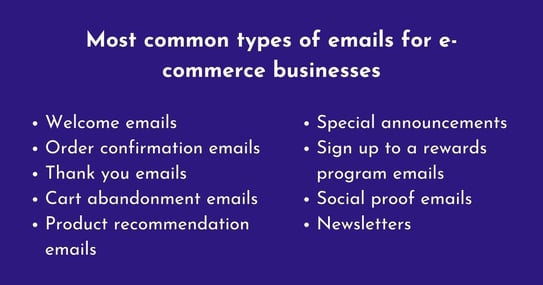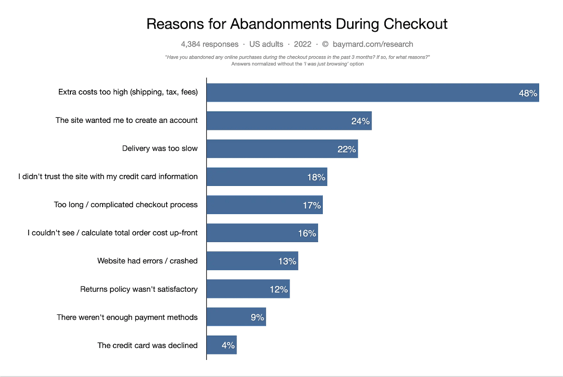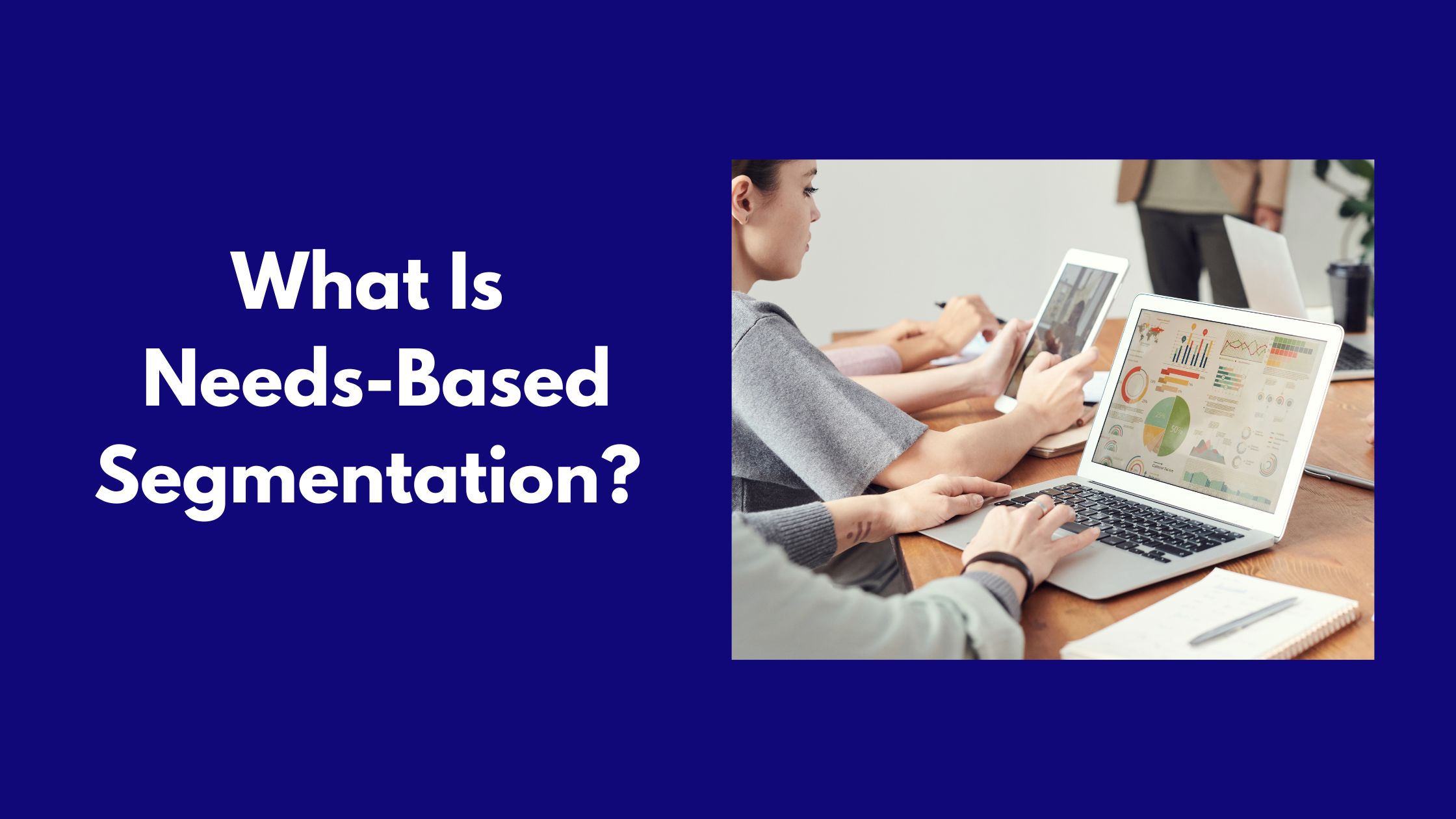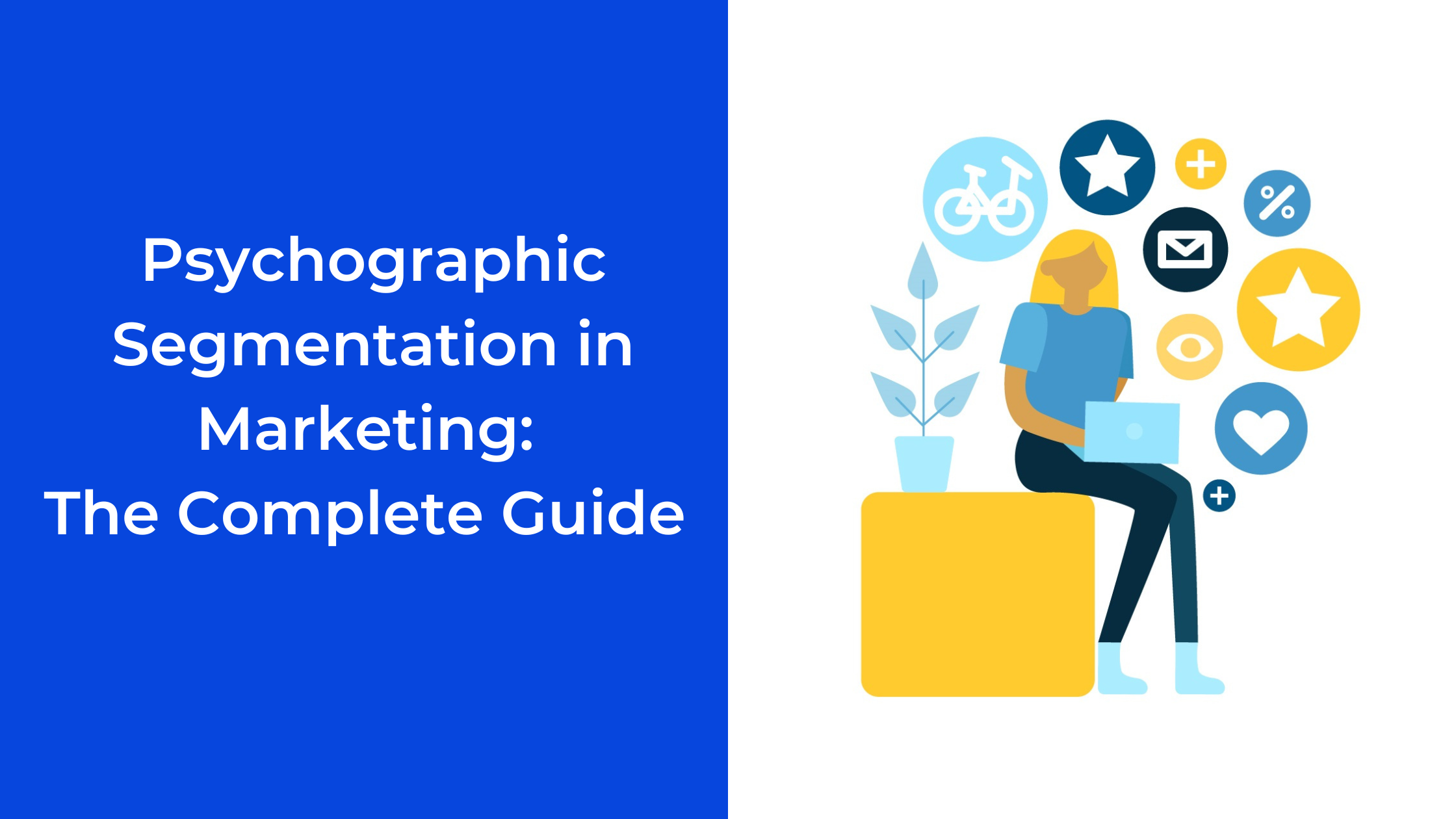7 Email List Segmentation Best Practices to Follow for Great Results
Did you know that the best and “most effective email marketing campaign strategy” is subscriber segmentation? (HubSpot)
Creating an email list offers many opportunities for your e-commerce business. Not only can you reach your customers via a platform they check almost daily, but also benefit from email segmentation.
And contrary to common belief, email marketing isn’t just about trying to attract a large number of subscribers.
If you want to truly make the most of an email list, then you’ll need to add segmentation to your strategy. This means following a number of email marketing segmentation best practices.
In this article, we’ll discuss the types of emails for e-commerce, the benefits of email list segmentation, and the top email marketing segmentation best practices for e-commerce stores.
What is email marketing segmentation?
Segmentation is the process of dividing your customers into segments or groups.
The 4 main types of customer segmentation are demographic segmentation, geographic segmentation, behavioral segmentation, and psychographic segmentation.
However, with email marketing, there are many to segment your readers and customers.
You can segment your email list based on their buying preferences, their spending,…etc. You can also segment them based on several criteria such as location and average monthly spending.
Email marketing isn’t dead: Here’s why
You know that saying ‘email is dead?’ Or ‘email marketing is dead?’ Well, ignore it. Because email is very much alive, well and kicking.
E-mail statistics show that email marketing is more popular with certain audiences and languages over others. For example, email marketing in the Middle East isn’t as common or as popular as in the United States.
Email marketing is still highly beneficial to online businesses.
So, while you’ll find few email marketing campaigns in Arabic, there are many in English and other languages.
Even in languages like Arabic, e-commerce business across various countries and regions are generating great results with email marketing campaigns. Specifically, with segmented email campaigns.
Moreover, as more businesses look to create omnichannel customer experiences, the need to use e-commerce websites, mobile apps, and email has grown. And continues to grow.
.jpg?width=523&height=347&name=email%20marketing%20(1).jpg)
So, what are the benefits of email marketing for e-commerce?
Let’s see. Email marketing
- Helps you connect with customers easily.
- Allows you to notify customers of upcoming collections, sales, services, and even website maintenance.
- Lets you market your products and services better.
- Is less expensive than other forms of advertising.
- Can save you time with automation.
- Increases your sales (especially if you’re using email marketing segmentation).
- Can support your referral marketing program.
- Increases website traffic.
- Can increase mobile app downloads.
- Can help you grow your audience and customer base.
- Helps you create personalized experiences.
- Helps you build retention and rapport
- Offers unique opportunities to create surveys (for customer satisfaction or for ways to improve your business and services)
- Helps you reach people on any device (desktop, mobile, tablet,…etc).
- Helps you track your efforts and campaigns through email marketing metrics and data. You can use this data to improve your next e-commerce email marketing campaigns.
In addition to the above, customers feel more at ease giving you their email than their mobile numbers.
Types of email marketing for e-commerce
As an e-commerce business, you need to be aware of the different types of emails and email campaigns you can create. Each email campaign serves a different purpose.
Let’s explore the most common types of emails for e-commerce businesses.

-
Welcome emails
Though welcome emails are considered basic, successful e-commerce businesses can turn them into an opportunity to build a relationship with their customers.
E-commerce stores can use welcome emails to
- Introduce customers to their brand
- Inform of their loyalty program (if they have one)
- Include links to download their mobile app (if they have one)
- Inform of where their offline stores are located
- Tell them about their shipping policies
Among other options.
However, it’s important to keep your welcome email short.
-
Order confirmation emails
If your customer completes a purchase, they should get an order confirmation email.
Some businesses include just the invoice featuring the products bought and their prices.
Further reading: The Best 5 eCommerce Email Marketing Examples to Inspire You
-
Thank you emails
There are many reasons why you should be thanking customers.
Whether they’ve completed a purchase, signed up for your rewards program, referred people to your business…
Use thank you emails as a means to make customers feel appreciated and build loyalty.
-
Cart abandonment emails
This is the most important type of e-commerce emails you’ll ever send.
The average cart abandonment rate is a whopping 70%, according to 2023 data by the Baymard Institute. This means that nearly three quarters of your customers are likely to abandon their cart. (Sorry!)
Effective cart abandonment emails decrease the rate of people abandoning their carts and increase conversions. To ensure your emails are effective, you should follow the best practices for abandoned cart emails.
And why do customers abandon their carts? The Baymard Institute uncovered 10 reasons based on a survey of roughly 4,380 people.
The most important of those reasons was “too high” extra costs (48%), the survey said.
Here’s an overview of those reasons.

-
Special announcements
Use email marketing to make special announcements about new partnerships, new product launches or new lines, or even upcoming discounts.
Many businesses give their email subscribers a heads-up about upcoming discounts before making the announcement on social media. They also do that with new product launches.
Product launch emails are a type of special announcement email.
This gives customers more reason to subscribe to your email list. They get first dibs on upcoming sales or new product launches.
-
Product recommendation emails
Unlike product launches, product recommendation emails are created after a customer adds a product to their cart or completes a purchase.
For example, if a customer bought a special type of shampoo, you can send a product recommendation email with similar types or a conditioner from the same product line.
-
Sign up to your rewards program emails
When you create a loyalty and rewards program, you should inform your email list and encourage them to sign up.
You can track how many people signed up to your loyalty program using email marketing metrics.
Make sure you offer an additional benefit, like a first-time subscriber discount, to increase subscribers.
-
Social proof emails
Many e-commerce businesses use social proof emails as a type of abandoned cart email. Social proof acts as a means to show customers that others have bought and enjoyed a certain product that they’re hesitant about.
Let’s say your customer added your raspberry chocolate bar to their wishlist but haven’t bought it yet.
Sending a social proof email telling them that 100 other people bought that raspberry chocolate bar and it has 80 5-star reviews is social proof.
-
Newsletters
Newsletters are the most common type of emails for e-commerce and any other type of business. They’re usually sent out in the form of ‘email blasts.’ That is, they are sent to your entire email list.
Some businesses have weekly, bi-weekly, or monthly newsletters. Depending on the size of the business, some give customers the choice between weekly and monthly newsletters.
If you’re just starting out with email marketing, you can start out with a monthly newsletter. HOWEVER, if you don’t have anything important to say, then don’t send a newsletter, or even create one.
Email marketing segmentation best practices
Now it’s time to dive into the best practices for segmenting your email list.
While you can send many of the abovementioned types of emails to your entire email list, some of them could benefit from segmentation.
Product recommendation emails and social proof emails should be segmented based on customer purchases and preferences.
While you don’t have to apply all of them at once, it’s best if you combine at least two of these email marketing segmentation best practices in each campaign.
“The most effective strategies for email marketing campaigns are subscriber segmentation (78%), message personalization (72%), and email automation campaigns (71%).” (HubSpot Blog Research, 2021)
-
Combine base segments
When it comes to email marketing best practices, basic segmentation is always a good starting point. You can also combine it with any form of segmentation from the ones below.
Base or basic segments are demographic, geographic, behavioral, and psychographic segmentation.
By combining two or more of these segments, you can narrow down the number of customers while keeping it fairly simple.
For example: You may choose customers who are women between the ages of 20 and 30, who live in a certain state or city. You can segment them further by adding a product line or category of products they like.
-
Consider buyer behavior
Segmenting based on buyer behavior means customers who make regular purchases at certain times during the month or week.
You can use this email list segmentation tactic when you have many subscribers and can track their behavior.
Let’s say you have customers who buy cartons of milk in the first week of each month. You can create a segment for them and send them a reminder beforehand, informing them of an upcoming offer. Or email them with other products that go with theirs – among other ideas.
Behavioral marketing segmentation helps various types of businesses predict their high seasons, revenues, and more.
That’s why it’s among our email marketing segmentation best practices.
-
Use product-centric segmentation
A product-centric segment is a segment for a specific product or line of products. Let’s say you sell various beauty and wellness products.
Choosing to target customers who only buy facial creams or haircare is creating a product-centric segment.
Using product-focused segments allows you to be ultra-specific in your targeting. It means customers who buy body splashes won’t get the same email as those who purchase facial creams. And vice versa.
And why is this a best practice for segmenting your email customers? It ensures a high open rate and possibly a high conversion rate.
.jpg?width=534&height=357&name=email%20marketing%20(2).jpg)
-
Segment based on spending level
You can segment your email list by how much your customers are spending.
This is one of the major email marketing best practices because it allows you to send different types of emails to different types of customers.
For example, you can send a re-engagement email or an abandoned cart email to customers who haven’t bought products from you in the last 3 months.
Similarly, you can send emails to customers who spend over $100 each month at your online store. You can reward them with a special perk or thank them for trusting your brand.
You can take the opportunity and ask them to refer you to others to leave reviews for your products.
-
Segment based on job function
This segmentation method may differ based on the amount of information customers have provided you with. If you don’t know what your customers do for a living, this method won’t work for you.
-
Use RFM segmentation
RFM stands for recency, frequency, and monetary value. RFM segmentation for e-commerce combines several main segments while looking at them in a different light.
Recency measures when the most recent purchase of a certain product or by a certain customer was last made.
Frequency looks at the ‘how often’ aspect of buying. It’s similar (in a few ways) to buyer behavior.
Monetary value looks at your top-spending customers.
-
Segment based on how your customers shop
A great way to segment your email list is to look at how and where your customers shop. Do they buy from you in-store? Or via your website? Or your mobile app?
Do they see your products online and then visit your store to complete the purchase? You may see this behavior with fashion and apparel brands where customers aren’t sure of their size. Or if the product will look good on them.
Based on that information, use can create an e-commerce email marketing campaign inviting customers with products in their mobile app cart to visit your store. There they can see the products for themselves and complete the purchase.
Final e-commerce email marketing tips
Last but certainly not least, here are a few tips to improve your e-commerce email campaigns.
-
Use email software
Use email marketing automation software to automate many of your email workflows and messages.
For better results, follow and use the top the best practices for email marketing automation.
The email software will also help you track various email marketing metrics.
You can use Convertedin to not only schedule your e-commerce email campaigns, but also benefit from our super segmentation engine.
Convertedin offers an all-in-one e-commerce marketing platform with extensive automation and segmentation, from your online ads to emails to SMS marketing.
Further reading: Email Marketing Automation for Ecommerce: How It Works, Benefits, Examples
-
Create an ecommerce email strategy
Make sure you create an e-commerce email marketing strategy before you start sending out your emails.
Map out when certain campaigns will go out. You don’t have to write the content of the email when you’re just fleshing out your strategy. Just set estimated dates with planned campaigns.
-
Review email marketing metrics
To ensure successful email marketing campaigns, you need to keep an eye on your email marketing metrics. Decide which metrics help you achieve your goals and review those during and after each email campaign.
Wrapping it up
Segmenting your email customers means you can create targeted ads and targeted email campaigns. Creating targeted campaigns means you don’t have to worry about sending irrelevant emails to customers.
It may take some time to refine your email list, but it’s step that ensures better results for your campaigns.
You can even add some criteria in your signup form to segment new customers directly. Simply ask them what types of products they like.
Alternatively, you can track their behavior and segment them accordingly.
By following the above best practices for email marketing segmentation and relevant metrics, you can grow your business easily.
Need help creating automated email campaigns for your e-commerce business? Visit Convertedin, where you can automate email campaigns and create automated social media ads for your business.

